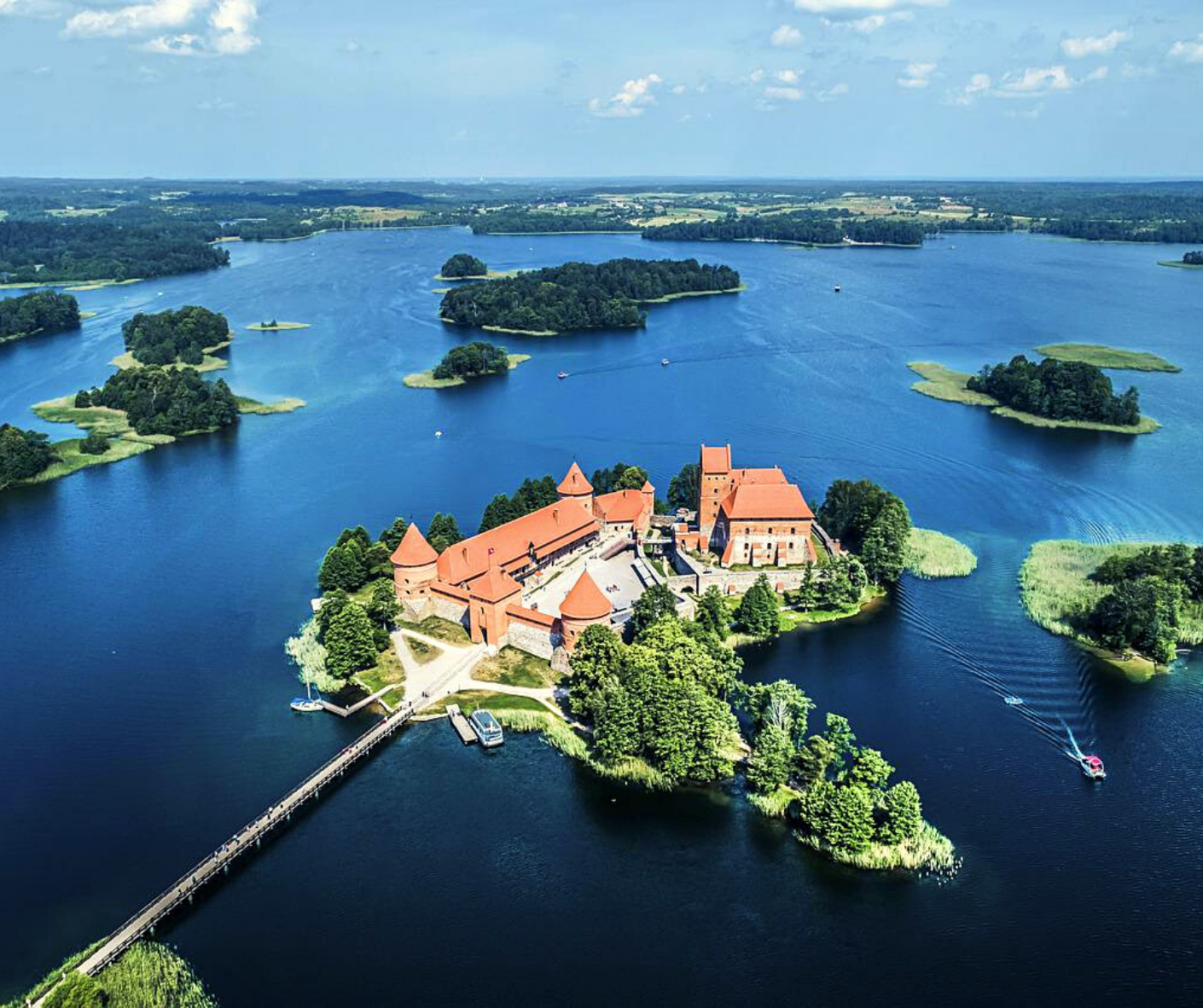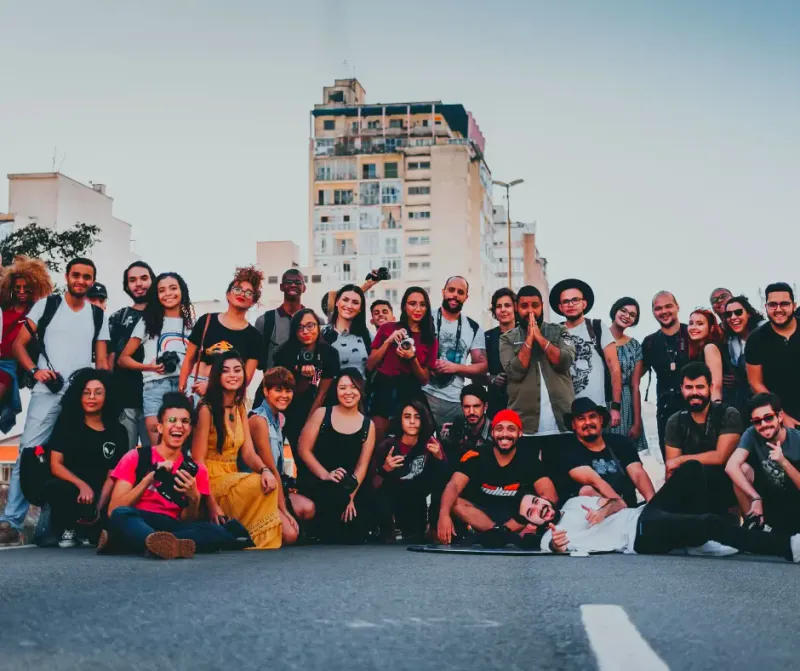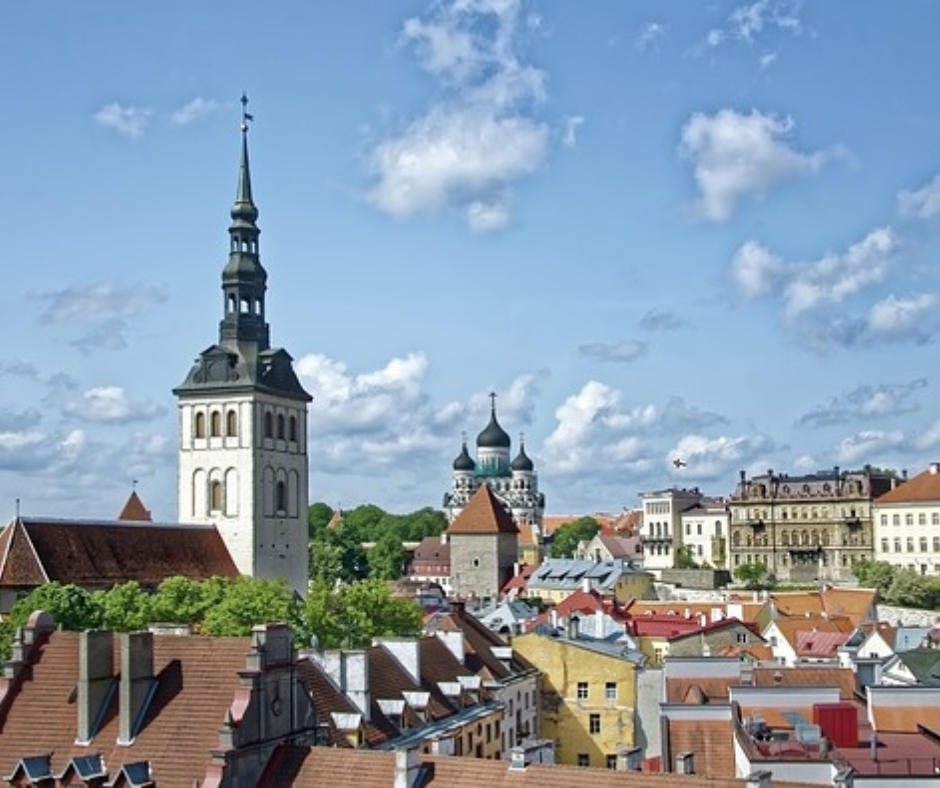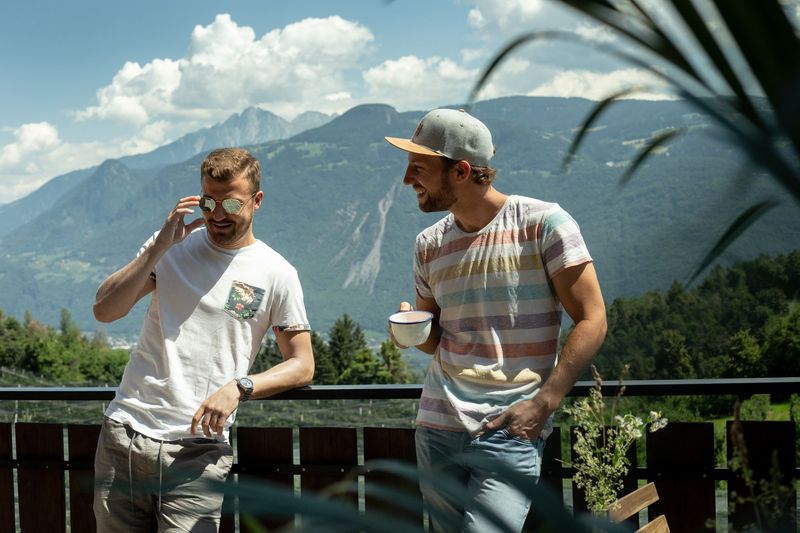Welcome to Sweden, the land of stunning landscapes, technological innovation, and a thriving digital nomad community. Ranked 29th worldwide for its fast broadband speed you can stay connected and productive wherever you go.
Did you know that Sweden is known for its fika culture? Take a break from work and indulge in the tradition of enjoying a cup of coffee with a delicious pastry.
Don't miss out on experiencing the unique Swedish lifestyle, where work-life balance and sustainability are highly valued.
🌱 Travel health insurance for Sweden
💡
Genki Explorer is a travel health insurance with worldwide cover. Monthly payment plans, and easy signup in less than 1 minute.
The table of content will be generated here
🇸🇪 Entry requirements for Sweden
- Visa: Valid Schengen visa.
- Travel health insurance: Travel health insurance that matches the Schengen requirements. Your insurance policy needs a minimum amount of €30,000 of emergency cover.
✈️ How to get to Sweden
- Plane: Flying is the most popular and convenient way to travel to Sweden from international destinations. Sweden has several major airports, including Stockholm Arlanda Airport (ARN), Gothenburg Landvetter Airport (GOT), and Malmö Airport (MMX), which are well-connected to numerous cities around the world.
- Train: If you are coming from a neighboring country in Europe, traveling to Sweden by train can be an enjoyable option. Sweden has train connections with several European cities, including Copenhagen (Denmark), Oslo (Norway), and Helsinki (Finland). The train journey offers scenic views and can be a comfortable and environmentally friendly mode of transportation.
- Ferry: Traveling to Sweden by ferry is a popular choice, especially if you are coming from Denmark, Germany, Finland, or Estonia. Ferry services operate between various ports, such as Stockholm, Gothenburg, and Malmö, and neighboring countries. Ferries often provide comfortable onboard facilities, including cabins, restaurants, and entertainment options.
- Private car: If you prefer the flexibility of driving, you can reach Sweden by car from neighboring countries via well-maintained road networks. Sweden has road connections with Norway, Finland, Denmark, and Germany. Keep in mind that you may need to check and comply with specific driving regulations and border crossing requirements, including obtaining necessary permits or paying tolls. If you are traveling from Germany to Sweden via Denmark, there are two main bridges that you will pass along the way. These bridges are the Øresund Bridge (8 km long) and the Great Belt Bridge (18 km long). Both routes are a stunning adventure and an impressive engineering feat.
- Bus: Bus travel is an option for reaching Sweden from nearby European countries. Several international bus companies operate routes to Swedish cities, offering cost-effective and convenient transportation. Check out Flixbus, as they offer routes connecting most European cities.
🏡 How to find a place
- Airbnb: You can find here, a wide range of short-term rental options, including apartments, studios, and shared spaces. You can filter your search based on location, price, and specific amenities to find an accommodation that suits your needs. Make sure to read reviews and communicate with the host to ensure a smooth stay.
- Serviced Apartments: Many cities in Sweden offer serviced apartments specifically designed for short-term stays. These apartments are fully furnished and equipped with kitchens, laundry facilities, and wifi. Companies like Forenom, hometogo, and BizApartment offer serviced apartments in various Swedish cities.
- Coliving spaces: Co-living spaces are becoming increasingly popular among digital nomads. These spaces provide a combination of private rooms or apartments and shared common areas, allowing you to have your own space while also fostering a sense of community. colive or k9 coliving are some co-living options available in Sweden.
🚌 Public transport in Stockholm
- Tickets and payment: Stockholm's public transport system uses an integrated ticketing system, where a single ticket is valid for travel on buses, trams, metro, commuter trains, and some ferries. Tickets can be purchased at ticket machines located at stations, via the SL app, or with a contactless credit card. Various ticket options are available, including single-use tickets, travel cards, and period passes.
- Stockholm metro (Tunnelbana): The Stockholm Metro, locally known as the Tunnelbana or T-Bana, consists of three main lines (blue, red, and green) that cover a wide area, including the city center and surrounding suburbs. The metro operates from early morning until late night, with frequent train services. Stations are well-marked and typically feature unique artwork, making the metro system itself an attraction.
- Buses: Stockholm has an extensive bus network that complements the metro system. Buses operate throughout the city and connect various neighborhoods, including areas not served by the metro. The buses are operated by several companies, including SL (Stockholm Public Transport), and offer convenient transportation options during the day and even during late hours with night buses.
- Trams: Trams are another mode of public transport in Stockholm, primarily serving the city center and adjacent areas. Trams offer a convenient and scenic way to explore central Stockholm, passing through popular areas like Gamla Stan (the Old Town), Djurgården, and Södermalm.
- Commuter Trains: Stockholm's commuter train network, known as Pendeltåg, connects the city center with the surrounding suburbs and towns. These trains are operated by SL and provide transportation to destinations further away from the city. Commuter trains are an excellent option if you plan to explore areas outside of central Stockholm.
- Ferries: Stockholm's archipelago consists of numerous islands, and ferries are an essential part of the city's public transport network. Ferries connect various islands and offer scenic transportation options, particularly during the summer months. Some popular ferry routes include Djurgården, Vaxholm, and Fjäderholmarna.
🏘 Where to stay in Stockholm
- Södermalm: Södermalm is a trendy and diverse neighborhood known for its hip cafes, boutiques, and art scene. It offers a mix of residential areas and bustling streets with a lively nightlife. Södermalm provides a great balance between urban living and a relaxed atmosphere. Monthly prices here will probably vary between €1,600-€2,000 for a 1-bedroom apartment.
- Vasastan: Located close to the city center, Vasastan is a popular neighborhood known for its beautiful architecture, parks, and cozy cafes. It offers a mix of residential areas, commercial spaces, and cultural attractions. Vasastan provides a slightly quieter atmosphere while still being well-connected to other parts of the city. The monthly average price for a 1-bedroom apartment is between €1,400-€2,000.
- Östermalm: Östermalm is an upscale neighborhood known for its elegant buildings, high-end shopping, and proximity to green spaces. It offers a more luxurious and sophisticated living experience. Östermalm is popular among professionals and individuals who appreciate a refined lifestyle. Prices here will also be between €1,400-€2,000 per month.
🧑🏻💻 Where to work from in Stockholm
Coworking spaces
- Helio: Helio coworking spaces provide a unique coworking experience throughout Stockholm and in popular parts of the town. The spaces create a cozy and inspiring work environment with contemporary design and historic Swedish charm. Additionally, members can enjoy amenities such as a rooftop terrace, a café, and networking events. A desk in the open area is available for €227 per month.
- Knackeriet: Another great option is located in Old Town Stockholm and called Knackeriet. The community focus space is on several floors in a charming building and memberships include a fast wifi connection, complimentary coffee, and snacks, and an in-house shower for those who go jogging during lunch. The space also hosts events like summer parties, sports activities, and creative sessions or movie nights. Monthly flex membership starts at €400.
Coffee shops
- Mellqvist Kaffebar: Located in the vibrant neighborhood of Södermalm, Mellqvist Kaffebar is a charming and cozy coffee shop known for its excellent coffee and relaxed atmosphere. With its comfortable seating, friendly staff, and free wifi, it's an ideal spot to set up your laptop and work while enjoying a delicious cup of coffee.
- Drop Coffee: Located in the hip district of Södermalm, Drop Coffee is a specialty coffee shop that not only serves exceptional coffee but also provides a welcoming space for remote work. The minimalist and Scandinavian-inspired interior, along with the friendly staff, creates a relaxed and productive atmosphere.
🚌 Public transport in Malmö
- Walking: Malmö is a pedestrian-friendly city with well-maintained sidewalks and designated walking paths. Many popular areas and attractions are within walking distance, making it enjoyable to explore the city on foot. Walking is a great option for shorter distances and discovering hidden gems in Malmö.
- Trains: Malmö is connected to the Swedish national railway network, making it convenient to travel to and from other cities. Trains are reliable, comfortable, and offer a fast way to commute within the city or explore neighboring areas.
- Buses: Malmö has an extensive bus network operated by Skånetrafiken. Buses cover the entire city, including residential areas, commercial districts, and popular attractions. They are a popular mode of transportation for both residents and visitors, offering regular schedules and convenient routes.
- Malmö City Bike: Malmö by Bike is a popular bike-sharing program that allows you to rent bicycles for short trips within the city. With numerous bike stations located throughout Malmö, you can easily pick up and drop off bikes at designated points.
🏘 Where to stay in Malmö
- Västra Hamnen: Västra Hamnen, also known as the Western Harbor, is a modern and sustainable neighborhood located by the waterfront. It offers a mix of residential and commercial spaces, along with beautiful parks and promenades. Västra Hamnen is known for its contemporary architecture and eco-friendly approach, making it an attractive choice for digital nomads seeking a vibrant and environmentally conscious neighborhood.
- Möllevången: Möllevången, often referred to as "Möllan" is a diverse and lively neighborhood with a multicultural atmosphere. It is known for its vibrant food scene, bustling market square, and alternative cultural events. Möllevången is a great choice for digital nomads who enjoy a bohemian vibe, diverse cuisines, and a lively urban environment.
- Gamla Staden: Gamla Staden, or the Old Town, is the historic heart of Malmö. It features charming cobblestone streets, colorful buildings, and a mix of shops, cafes, and restaurants. Living in Gamla Staden offers a unique experience with its rich history, proximity to cultural landmarks, and a cozy small-town atmosphere.
🧑🏻💻Where to work from in Malmö
Coworking spaces
- The Ground: Located in the heart of Malmö, The Ground offers a stylish and cozy coworking environment. With a focus on community and collaboration, this boutique space provides flexible memberships, comfortable workstations, meeting rooms, and various amenities like a fully equipped kitchen, BBQ area, and a cozy lounge. The interior design is modern and inspiring, creating a productive atmosphere for digital nomads.
- Mindpark: Mindpark is a unique coworking space housed in a converted old factory building. This creative environment fosters innovation and collaboration among entrepreneurs, freelancers, and digital nomads. With its industrial charm, diverse workspace options, and lively community, Mindpark offers a refreshing and inspiring place to work with amenities like ergonomic seating, free coffee/tea flow, and 24/7 access to the coworking area. 25-days-pass costs €425.
Coffee shops
- Solde Kaffebar: Solde Kaffebar is a cozy coffee shop located in the heart of Malmö. With its rustic interior, comfortable seating, and warm ambiance, it provides a perfect setting for digital nomads to work. The café offers a variety of specialty coffees and delicious pastries.
- Lilla Kafferosteriet: Lilla Kafferosteriet is a small and charming coffee shop known for its artisanal coffee and welcoming atmosphere. Situated in the vibrant Möllevången district, it attracts a diverse crowd, including locals and students. The café offers a cozy environment with plenty of natural light, making it an excellent choice for remote work.
- Djäkne Kaffebar: Djäkne Kaffebar is a popular coffee shop located in Malmö's old town, Gamla Staden. With its modern and minimalistic design, it provides a stylish and comfortable space for digital nomads. The café serves specialty coffee and offers a selection of sandwiches and pastries.
🚌 Public transport in Gothenburg
- Trams: Gothenburg is known for its extensive tram network, which is the backbone of the city's public transport system. Trams run frequently and cover most areas within the city, making them a popular choice for commuting and exploring. The trams are clean, comfortable, and equipped with modern facilities.
- Buses: Gothenburg has an extensive bus network that complements the tram system. Buses provide connections to areas not covered by trams and offer additional flexibility in reaching different parts of the city. They operate on a regular schedule and are an efficient mode of transport for both short and long distances.
- Ferries: As a coastal city, Gothenburg also offers ferry services that connect different parts of the archipelago and islands in the Gothenburg area. Ferries provide a scenic and enjoyable way to explore the surrounding waters and visit nearby destinations.
- Gothenburg city bikes: For shorter trips within the city center, Gothenburg offers a bike-sharing system called styr&ställ. These bikes can be rented for a specified period and provide a convenient and eco-friendly way to navigate the city's streets and bike paths.
- Trains: While primarily focused on regional and national travel, Gothenburg's train network provides connections to other major cities in Sweden and beyond. Trains are a popular option for longer-distance travel and can be used for exploring nearby areas outside of Gothenburg.
🏘 Where to stay in Gothenburg
- Haga: Haga is a charming and historic neighborhood known for its cobblestone streets, colorful wooden houses, and cozy cafes. It has a bohemian vibe and is located close to the city center. The average monthly rent for a 1-bedroom apartment in Haga ranges from 10,000 SEK to 12,000 SEK (approximately €980-€1,180).
- Linnéstaden: Linnéstaden is a trendy and vibrant neighborhood with a mix of residential and commercial areas. It offers a lively atmosphere, with a wide range of cafes, restaurants, and boutiques. It's also known for its beautiful parks and proximity to the city's cultural attractions. Rent will be similar to Haga and at least be €1,000 per month for a 1-bedroom apartment.
- Majorna: Majorna is a hip and creative neighborhood known for its artistic scene, vintage shops, and unique cafes. It has a laid-back atmosphere and is located close to the waterfront. Also in this area, you can count on a rent of €1,000+ per month.
🧑🏻💻Where to work from in Gothenburg
Coworking spaces
- Factory: Factory is a vibrant and modern coworking space located in the heart of Gothenburg. With its stylish and contemporary design, it provides a comfortable and inspiring environment for digital nomads and offers all amenities like high-speed internet, meeting rooms, printing facilities, and a fully equipped kitchen. A flexible monthly pass is available for €366.
Coffee shops
- Da Matteo: Da Matteo is a renowned coffee shop with multiple locations in Gothenburg, each with its own unique atmosphere. Known for their high-quality coffee and welcoming environment, they offer a great space to work.
- Kafé Magasinet: Located in the Haga district, Kafé Magasinet is a cozy and charming coffee shop housed in an old warehouse. With its rustic decor, comfortable seating, and relaxed ambiance, it provides an ideal setting for remote work. They serve a range of coffee options, along with a variety of mouthwatering homemade cakes and snacks.
🚊 How to travel around Sweden
- Train: Sweden has an extensive and efficient train network operated by Swedish Railways (SJ). Trains are a popular mode of transportation for long-distance travel between major cities such as Stockholm, Gothenburg, Malmö, and Uppsala. The train system offers comfort, reliability, and beautiful scenic views, especially when traveling through the countryside. It's advisable to book tickets in advance, especially during peak travel periods.
- Domestic flights: For covering long distances or reaching remote areas, domestic flights can be a convenient option. Several airlines operate domestic flights within Sweden, connecting major cities and smaller regional airports. This option is particularly useful when traveling to northern regions such as Kiruna or Östersund.
- Bus: Buses are an economical option for traveling within Sweden, offering extensive coverage across the country. Companies like FlixBus, Nettbuss, and Swebus operate intercity bus services, connecting major cities and towns. Buses can be a slower mode of transportation compared to trains, but they provide a budget-friendly option for exploring different parts of Sweden.
- Car rental: Renting a car is an excellent option for travelers who prefer flexibility and independence. Sweden has well-maintained road infrastructure, and driving allows you to explore off-the-beaten-path destinations and scenic routes at your own pace. Rental cars are available at major airports and cities, but keep in mind that parking fees and road tolls may apply in certain areas.
- Ferry: Given Sweden's extensive coastline and archipelago, ferries are a popular mode of transportation for island hopping and exploring coastal regions. There are numerous ferry services operating between different ports, allowing travelers to reach destinations like Gotland, the Stockholm Archipelago, or the West Coast islands.
- Bike: Sweden is known for its bicycle-friendly infrastructure and beautiful cycling routes. Renting a bike can be a fantastic option for exploring cities, coastal areas, and natural landscapes. Many cities, including Stockholm and Gothenburg, have bike-sharing programs that make it easy to rent bikes for short periods.
🎖Must see
- Gamla Stan (Old Town) in Stockholm: Gamla Stan is the historic heart of Stockholm and one of the best-preserved medieval city centers in Europe. Explore its narrow cobblestone streets, colorful buildings, and charming squares. Visit the Royal Palace, the official residence of the Swedish monarch, and marvel at the grandeur of Stockholm Cathedral (Storkyrkan). Don't miss Stortorget, the main square of Gamla Stan, with its iconic buildings and outdoor cafes.
- Djurgården in Stockholm: Djurgården is an island in central Stockholm known for its beautiful green spaces, museums, and entertainment. It's home to popular attractions like the Vasa Museum, where you can see a 17th-century warship that sank and was remarkably preserved, and the ABBA Museum, dedicated to the famous Swedish pop group. Explore the open-air museum and zoo at Skansen, which showcases traditional Swedish buildings and native wildlife. Enjoy a leisurely stroll or bike ride through Djurgården's lush parks and gardens.
- Södermalm: Södermalm is a trendy and vibrant neighborhood located south of Gamla Stan. It offers a mix of bohemian atmosphere, vintage shops, trendy boutiques, and hip cafes. Explore the streets of SoFo (South of Folkungagatan), known for its eclectic fashion, design, and culinary scene. Visit the viewpoint at Fjällgatan for stunning panoramic views of the city. Don't miss the unique Fotografiska, a contemporary photography museum showcasing international and Swedish artists. Entrance is between €15-€18 per adult.
- Abisko National Park: Located in Swedish Lapland, Abisko National Park is renowned for its stunning natural landscapes, including mountains, deep valleys, and the pristine Lake Torneträsk. It is an ideal destination for hiking, wildlife spotting, and, during winter, viewing the mesmerizing Northern Lights.
- Gotland: This picturesque island in the Baltic Sea is known for its medieval architecture, quaint villages, and scenic coastline. Explore the charming town of Visby, a UNESCO World Heritage site, with its well-preserved city walls and narrow cobblestone streets.
- Visby in Gotland: Situated on the island of Gotland, Visby is a medieval town with well-preserved city walls and a fascinating history. Stroll along the cobblestone streets, admire the medieval architecture, and visit the Gotland Museum to learn about the island's rich heritage. The entrance fee is between €8-€12 depending on the season.
- Liseberg in Gothenburg: Located in Gothenburg, Liseberg is Sweden's largest amusement park. It offers a wide range of thrilling rides, entertainment shows, and beautiful gardens. Liseberg is particularly popular during the holiday season when it hosts a renowned Christmas market.
- Icehotel: Located in Jukkasjärvi, the Icehotel is a unique and iconic attraction. It is the world's first hotel made entirely of ice and snow. Marvel at the stunning ice sculptures, stay in an ice room and experience the magical ambiance of this icy wonderland.
- Kiruna: Kiruna is a town in the far north of Sweden, famous for its Arctic beauty and the remarkable Icehotel. It's also a gateway to the remote wilderness and the stunning Abisko National Park. Additionally, Kiruna is known for the Kiruna Church, an extraordinary structure known for its distinctive architecture.
💡Good to know
- Internet: The average internet speed in Sweden is 115.15 Mbps download and 95.69 Mbps upload, providing reliable connectivity for digital nomads.
- Sim card: Sweden offers various options. I used Lyca Mobile prepaid sim card with 10GB for 199 Kr (€17) for 30 days.
- Currency: The official currency of Sweden is the Swedish Krona (SEK). 1 Euro is 11,75 SEK.
- Digital nomad community: Sweden attracts digital nomads with its modern infrastructure, work-life balance, and high living standards. While larger cities like Stockholm, Gothenburg, and Malmö have thriving digital nomad communities, smaller towns like Lund, Uppsala, and Visby also offer a favorable environment for remote work.
- Gothenburg: Known for its cultural scene and vibrant atmosphere, Gothenburg attracts digital nomads seeking a dynamic work-life balance.
- Malmö: Located in southern Sweden, Malmö offers a multicultural environment and a relaxed lifestyle. The digital nomad community is growing and the city boasts a good work-life balance, with a strong emphasis on leisure, nature, and well-being.
- Lund: The city is home to Lund University, which fosters a culture of research and entrepreneurship, creating opportunities for collaboration and inspiration. With its well-preserved historic charm, green spaces, and close proximity to nature, Lund offers a peaceful and conducive setting for remote work while providing access to modern amenities and a strong sense of community. Additionally, Lund's strategic location in southern Sweden provides convenient transportation links to other major cities, making it an ideal base for exploring the region.
- Cost of living: When traveling on a small to medium budget in Sweden, consider exploring cities like Gothenburg, Malmö, Uppsala, and Lund. Generally, the cost of living is higher in major metropolitan areas such as Stockholm and Gothenburg, while it tends to be lower in smaller cities and rural areas.
- Climate: Sweden has a diverse climate with four distinct seasons. Summers are relatively mild with temperatures averaging around 20-25°C, while winters can be cold, especially in the northern parts, with temperatures often dropping below freezing. The central and southern regions experience a temperate climate with mild winters and moderately warm summers.
- History: Sweden has a rich historical background dating back thousands of years. From ancient times to the present, Sweden has gone through significant changes. It was a Viking stronghold during the Viking Age, and in the Middle Ages, it developed as a powerful kingdom. Sweden has been a constitutional monarchy since 1809, and the current dynasty, the House of Bernadotte, has been in power since 1818.
- UNESCO: Sweden is home to 15 UNESCO World Heritage sites, including renowned landmarks like the Royal Domain of Drottningholm, the Birka and Hovgården Archaeological Site, and the High Coast/Kvarken Archipelago. These sites showcase Sweden's natural and cultural heritage.
- Culture: Swedish culture is characterized by a mix of tradition and modernity. The country is known for its design, music, literature, and culinary delights. Swedish cuisine often includes dishes like meatballs, herring, and traditional pastries like cinnamon buns. Swedes value nature and outdoor activities, with a strong emphasis on sustainability and egalitarian values.
- Nobel prizes: Sweden is the proud host of the prestigious Nobel Prizes. The Nobel Prize ceremony takes place annually in Stockholm, recognizing outstanding achievements in various fields, including physics, chemistry, literature, peace, and economics.
- Archipelago: Sweden boasts a stunning archipelago consisting of thousands of islands along its coasts. The Stockholm Archipelago, in particular, is a popular destination with its picturesque islands, scenic boat trips, and opportunities for outdoor activities like sailing, kayaking, and fishing.
🚧 What to avoid
- Avoid littering: Sweden places a strong emphasis on environmental consciousness and cleanliness. It is important to dispose of trash properly and respect the natural surroundings by not littering.
- Respect personal space: Swedes value their personal space and privacy. It is advisable to maintain an appropriate distance when interacting with locals and avoid unnecessary physical contact.
- Follow public etiquette: Sweden has a strong culture of politeness and consideration for others. It is important to adhere to basic etiquette such as queuing patiently, speaking softly in public places, and using "please" and "thank you" when interacting with locals.
- Avoid excessive drinking: While alcohol consumption is common in Sweden, excessive drinking and public intoxication are generally frowned upon. It is advisable to drink responsibly and be aware of the local laws and regulations regarding alcohol consumption.
- Respect quiet hours: Swedes value peace and tranquility, especially during the evenings and nights. It is important to observe quiet hours and avoid making loud noises or disturbances, particularly in residential areas or public spaces during nighttime.
- Avoid discussing personal finances: Swedes tend to be private about their personal finances. It is considered impolite to inquire about someone's salary or financial situation, so it is best to avoid such topics unless it is brought up by the locals themselves.
- Be cautious with photography: While photography is generally permitted in public places, it is advisable to be mindful of individuals' privacy. Always ask for permission before taking someone's photo, especially in more intimate or private settings.
🚴🏻♀️ How to stay healthy
Stay active
- Hiking and nature walks: Sweden is known for its stunning landscapes, including national parks, forests, and mountains. Explore hiking trails that suit your fitness level and enjoy breathtaking views, fresh air, and the tranquility of nature. Popular day hiking routes close to Stockholm are Haga Park, Djurgården, Nackareservatet, or Tyresta National Park.
- Cycling: Sweden has a well-developed cycling infrastructure with numerous bike paths and scenic routes. Rent a bike and explore the cities or venture into the countryside, enjoying the picturesque scenery along the way.
- Skiing, snowboarding, and cross-country skiing: During the winter months, Sweden offers excellent opportunities for skiing, cross-country skiing,, and snowboarding. Head to ski resorts such as Åre, Sälen, or Vemdalen to hit the slopes and enjoy winter sports.
- Water activities: Sweden's extensive coastline and numerous lakes provide ample opportunities for water-based activities. Try kayaking, canoeing, paddleboarding, or sailing to explore the archipelagos, rivers, and lakes.
- Winter ice activities: Embrace the unique Swedish winter experience by trying activities like ice skating, ice fishing, or even dog sledding. Many frozen lakes and outdoor ice rinks are available for ice skating enthusiasts. I really can recommend trying ice fishing. You can practice your patience and experience a really Nordic way of fishing, which I find very cool.
- Wildlife safari: Join a wildlife safari to spot Sweden's diverse wildlife. From moose and reindeer to birds and marine life, you can embark on guided tours or self-guided adventures to observe and learn about the country's native fauna. I used to go into the forest by car for “moose-watching”. Indeed i saw one once.
- Rock climbing: Sweden offers a variety of rock climbing opportunities for both beginners and experienced climbers. Climb natural rock formations or visit indoor climbing gyms for a thrilling and challenging workout.
- Swimming and beach activities: In the summer, take advantage of Sweden's numerous lakes and coastal areas for swimming, sunbathing, beach volleyball, and other water-based activities.
Health risks
- Water quality: Yes, you can drink tap water in Sweden without any concerns
- Air quality: The air quality in Sweden is generally good.
⚓️ Long stay
- Working holiday visa: Sweden has bilateral agreements with certain countries that allow young people (usually aged 18-30 or 35) to live and work in Sweden for a limited period, typically up to one year.
🇸🇪
Experiences to share or questions to ask about Sweden?
Iceland for nomads
Iceland, a small island nation situated in the North Atlantic Ocean, is a destination unlike any other. With its rugged landscapes, icy glaciers, and steaming hot springs, Iceland is a land of contrast and wonder. One of the defining features of Iceland is its geothermal activity, which powers much…

Denmark for nomads
Are you looking for a happy place to work from? You just found one: Denmark. The northern country is reported to be one of the happiest countries in the world. Though not immediately obvious on the map, Denmark includes more than 400 islands, of which 72 are populated. The peninsula
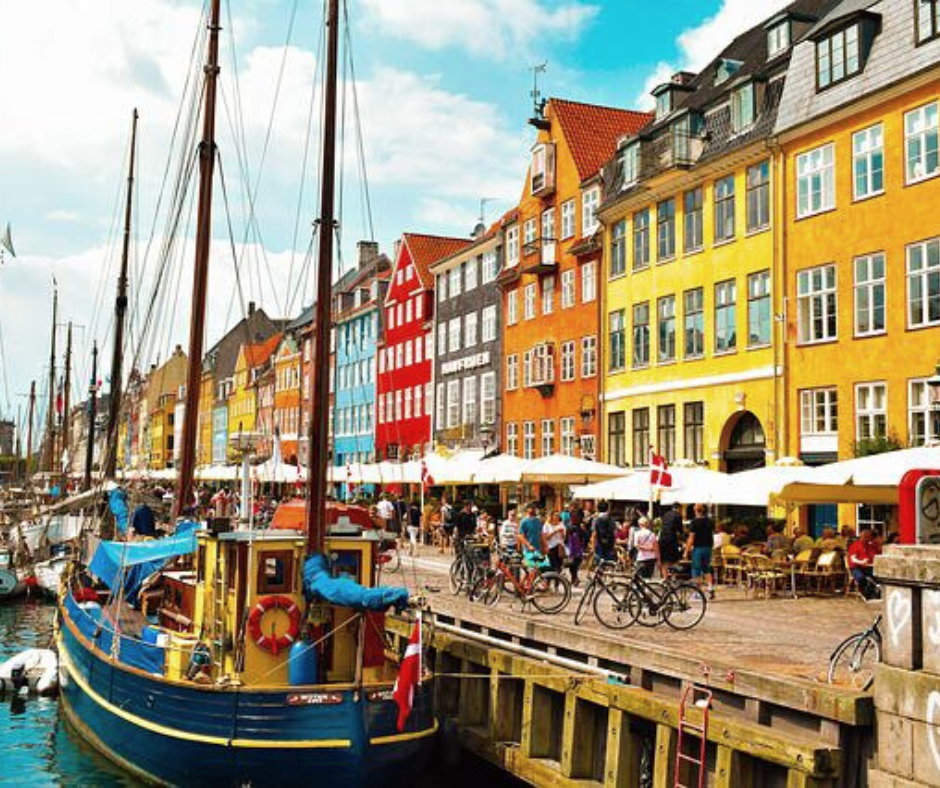
Estonia for nomads
Medieval town walls and towers, ancient castles, and cobbled streets are just a few hints of the rich history of the young country, which was established only in 1918. Tallinn, nicknamed the European Silicon Valley, is today a well-known hub for foreign investors, startups, and entrepreneurs, and th…

Lithuania for nomads
Lithuania is one of the most visited countries in Eastern Europe, and after its independence in 1990, the country allowed many Western institutions to settle and nourished open relationships and modernity. In a country that celebrates Basketball like a religion, you can find many outdoor activities…
